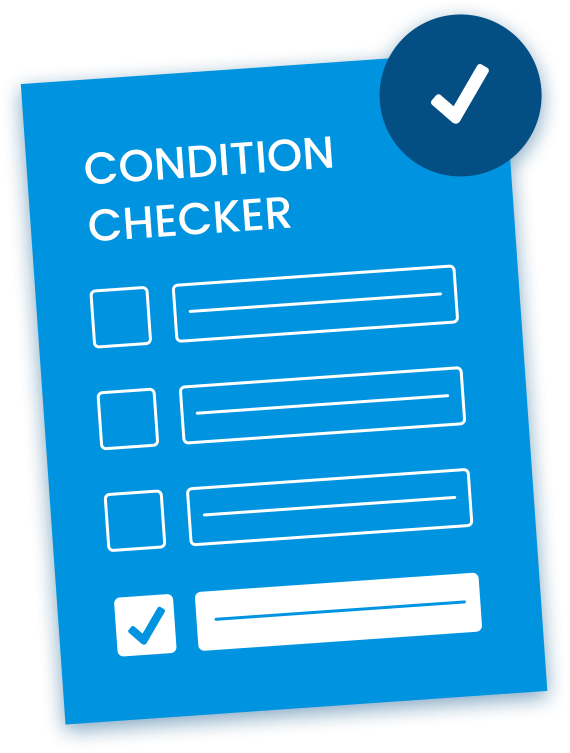Spinal Bone Spurs
Find out which possible conditions you may be suffering from by trying our 2-min Guided Pain Assessment Form!





Bone spurs also called osteophytes, are tiny pieces of bone that stick out or project from a normal bone. Bone spurs often occur in areas of inflammation, where friction against existing bone stimulates that area to produce additional bone cells. Bone spurs can occur throughout the body, but spinal bone spurs are one of the most common types.
Spinal bone spurs typically occur near the edges of the facet joints (which are bones that separate each vertebra) in the spine, usually as a result of inflammation of the ligaments between the bones.
Although some bone spurs do not cause any symptoms, in some cases these tiny bone projections can press on spinal nerves causing tingling, numbness, pain or tenderness that radiates into the arms, neck or legs. The area in which the affected nerve leads to may also feel weak.
In most cases, spinal bone spurs form as a result of persistent inflammation. If you have a form of spinal arthritis, for example, bone spurs often develop within bone areas where cartilage has begun to wear away. Tendonitis, sudden injury or trauma, genetics or even your nutrition and lifestyle (such as poor posture, repetitive twisting or excessive weight-lifting) can also cause spinal bone spurs to develop.
Spinal bone spurs that do not cause symptoms are usually undetected unless spotted on an X-ray or precision imaging. Typically, treatment is only initiated for bone spurs that cause pain or other uncomfortable symptoms.
Spinal bone spurs can also be caused by another underlying condition, such as spinal stenosis, a condition in which the opening of the spinal column begins narrowing, causing friction and inflammation. Spinal spondylolisthesis and spondylosis, two similar conditions which often occur with aging, can cause shrinking of the discs, slippage of the discs, and other spine elements that can cause a bone spur. Degenerative spinal conditions such as these may increase the likelihood of bone spurs in the spine.
Are you worried you may have a spinal bone spur? Try our Condition Checker below to begin a self-diagnosis and start your journey toward a better quality of life, free of pain and uncomfortable symptoms.

Find your condition with our 2-minute Condition Checker.
Most spinal bone spurs are not painful, but they can put extra pressure on the surrounding nerves, muscles and ligaments. When bone spurs start causing interference in the surrounding tissues and bones, symptoms begin to manifest. The areas that are mostly affected include the upper, middle and lower back as well as the knee, hip, shoulder, feet, arms and hands. The following complications may indicate that you have bone spurs:
For many people, receiving prompt medical attention is critical to preventing further damage. Seek medical attention to get long-lasting relief and avoid secondary complications if you suspect you may have a bone spur. Talk to an NJSO expert today.

Discover which treatment options are right for you with our Treatment Finder.
The initial treatment of spinal bone spurs is aimed at reducing inflammation and strengthening the muscles in your back to help provide support and reduce stress and strain on the spine.
Bone spurs are typically detected through X-rays, and their involvement with a nerve root is evaluated through an MRI or CT scan. In some cases, the severity of a bone spur is tested through electroconductive tests to evaluate the extent of nerve injury, especially if your symptoms include pain, tingling, numbness or loss of strength or motion in your arms or legs.
After a bone spur is fully evaluated, conservative methods are first recommended, including physical therapy, rest and rehabilitation, anti-inflammatory injections, or pain medication.
While most patients benefit from conservative treatment methods, some patients may require orthopedic surgery, especially if the bone spur is pressing on a nerve or limiting your range of motion by impinging tendons or ligaments in the spine. In these cases, NJ Spine & Orthopedic may recommend a special minimally invasive treatment called a laminoforaminotomy, a procedure that removes small portions of the protruding bone and relieves pressure on spinal nerves in an outpatient setting.
Do you worry you may have a spinal bone spur, or perhaps more than one? Try our Candidacy Verification tool to find a personalized treatment plan that’s right for you and start the process of finding relief today.

Determine your eligibility with our Candidacy Verification.
"*" indicates required fields